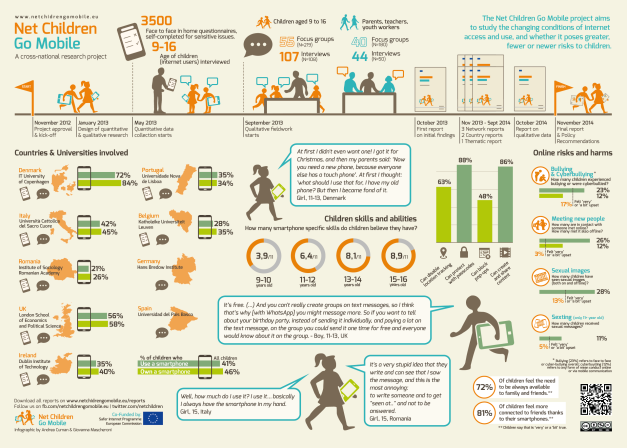The simple fact that this word has made it into the Oxford Dictionary shows just how prevalent it has become.
The phenomenon of “bullying” is nothing new: children and adolescents have always picked on one another. What digital communication means is that it doesn’t stop when the child leaves school. Bullies can now chase victims into their bedrooms at home. This intrusion into their private life can happen around the clock, content is distributed extremely fast and the culprits can act anonymously if they wish.
Studies show that the number of cyber-bullying victims is growing annually and over half of the affected children in Europe mention depression as a result of cyberbullying. 38 per cent say that they have thought about suicide . Regardless of whether its obscene texts, embarrassing photos, videos or messages, it can go around the world in seconds. Current surveys show that children mainly use their internet time for communication and entertainment.
Dr. Astrid Carolus, media psychologist at the University of Würzburg says that “For this younger generation the separation between the offline world on one side and the online world on the other side is already gone. In short: While older people ‘go to the internet’, the young are already online and spend a considerable amount of their time online. With all advantages but also with all risks.”
Robin (17) is working as a trainee at a company. A few days ago, a friend told him about a video circulating on social media. Like lots of other teenagers he watches videos on Facebook. In one of these videos, a boy punches another boy of the same age. Robin doesn’t know the culprit or the victim but he does know the school visible in the background. It’s the school where his mother works as a teacher.
Robin talks to his mother and shows her the video after which she calls the police. The violent teenager was found and brought to justice A happy ending? What about the victim? How must he feel? We can safely assume that he also saw the video as well.
Once it has been viewed, you can try to delete it from the computer or your social media wall, but trying to remove it from your memory is much harder.
And what about the person who shot the video? Or everyone who shared the video on their social networks? How should children react in such cases? This is where parents need to act. In the offline world we try to protect our children and making sure we know where they are and who they’re meeting; this shouldn’t stop when children go online. But just like offline, prohibiting does not help. Instead, parenting should help to develop a competent understanding of the dangers of the online world.
How can parents protect their children online?
- Be interested in the online activities of your child: talk to them regularly about what they’re doing;
- Create awareness of the risks: education has to start at an early age;
- Develop security strategies: use filters or parental controls;
- If something should happen, make sure you’re there to help;
- If you don’t know what you should do, don’t be afraid to ask for help Ask the experts
8 tips for parents to help stop #cyberbullying http://t.co/iplhwrO8Dc by @emm_david pic.twitter.com/QNMrq2xQwL
— Eugene Kaspersky (@e_kaspersky) June 21, 2014
In the past few years, lots have been done to help educate parents and children about this problem. Some schools even offer teaching units to help deal with cyberbullying with initiatives such as Safer Internet Day becoming more and more popular.
But this can only be the beginning. To realise a safer internet we have to educate our children more about what cyber-bullying does. They often underestimate the damage that can be done by posting an image or video.
Kaspersky Lab is dedicated to helping achieve this.
 bullying
bullying

 Tips
Tips